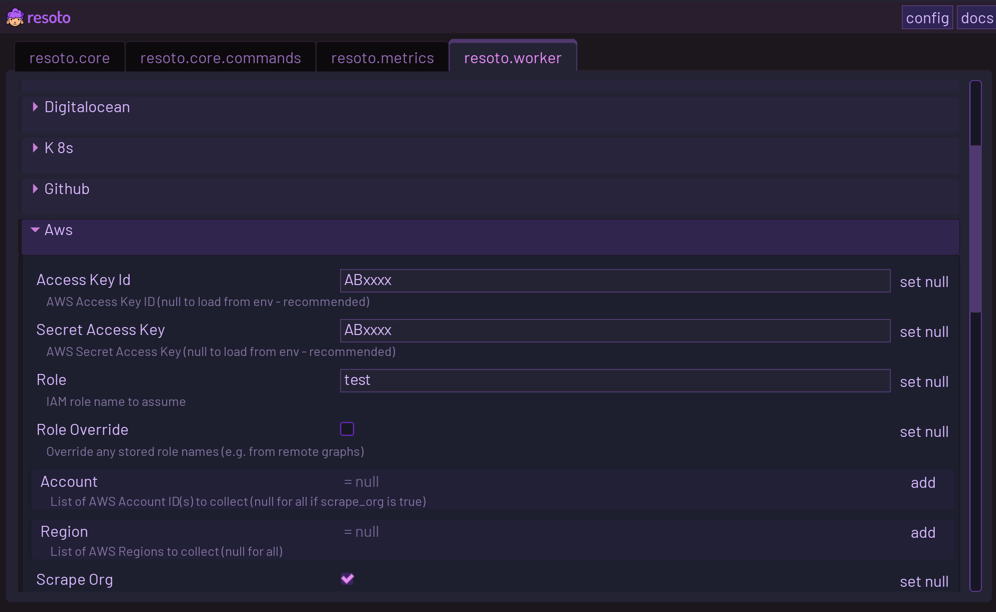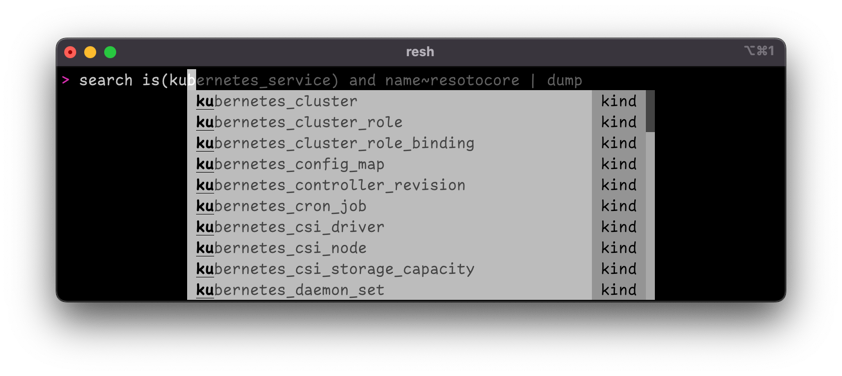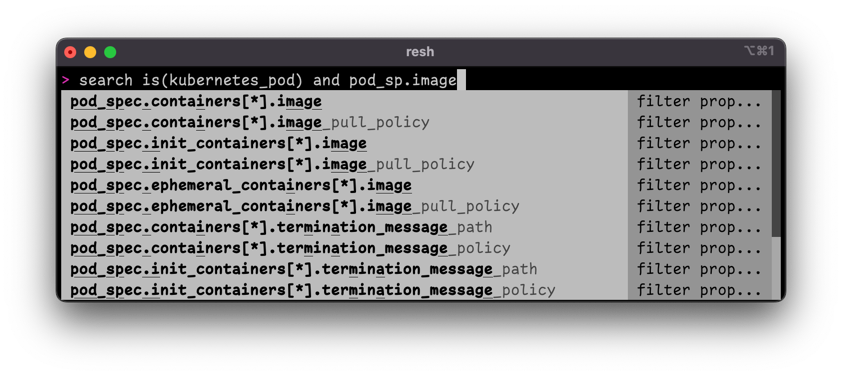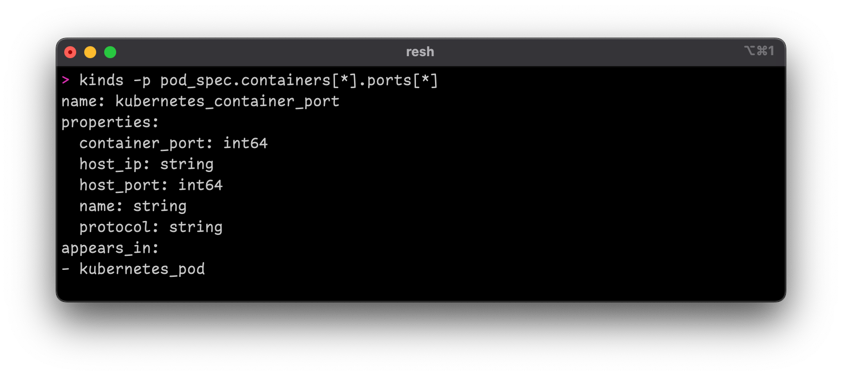2.4.0
What's Changed
Features
5d4db2e6resoto Incompatible attribute type (#1071)1beefaf4aws Add redshift collection support (#1067)8323da64aws Add edge from Beanstalk resource to SQS Queue (#1070)64f46888aws Add support for SQS (#1066)5679d943resoto fix node direction (#1068)340fa446aws [plugins/aws][feat] Add support for Elastic Beanstalk Application Environments and Resources (#1064)7a5d20b5aws Add support for kinesis streams (#1065)c598a788aws Enable new resources pre_cleanup/cleanup (#1063)79cb52dfaws Support s3 bucket deletion (#1062)568d6331aws Support RDS deletion (#1061)fc959ba1aws Support lambda deletion (#1060)38f91797aws Support IAM resources deleteon (#1059)5746279caws Add support for Elastic Beanstalk Applications (#1052)a3efec71aws Support ELB deletion (#1055)d27e53d0aws Supprt ELB v2 deletion (#1056)c09d3a76aws Support deletion of the EKS resources (#1054)fc814f66aws Support route table deletion (#1051)2bc149c6aws Support internet gateway deletion (#1050)e05b0a86aws Delete ec2 nat gateways support (#1049)96f47d62aws Support security groups deletion (#1048)25c3eadaaws Support subnet deletion (#1047)cc078de1aws Support vpc endpoints deletion (#1046)7e55db7aaws Support vpc peering connection deletion (#1045)f326114caws Support ec2 network interface deletion (#1043)1dc0321aaws Support Vpc deletion (#1044)6923d126aws Support Elastic Ip deletion (#1042)dae4c11aaws Support network acl deletion (#1041)c74cc9f9aws Support EC2 instance deletion (#1040)85bdae5caws Support ec2 keypair deletion (#1039)554fb497aws Support snapshot deletion (#1038)505888ddaws Add ec2 volumes deletion support (#1037)e90bd26daws Support deletion of Cloudwatch alarms (#1036)bbce886daws Support deletion of cf stack sets (#1035)fff2f4f6aws Support CloudFormatonStack deletion (#1034)d4dae499aws Support deletion in ASG (#1033)57b66e01aws Tagging support (#1027)2d86a467resoto add Anja as codeowner (#1032)377b13acplugin/aws Add support for Lambda Functions (#992)e8250ec0aws Add Iam Instance Profile (#1026)2604246caws Add lambda functions (#1022)f04cef97resotolib Allow to define predecessor and successor (#1025)3b739598aws Use stored account profile to access AWS (#1021)c466b55aaws Add auth test before collect (#1013)892be14caws Integrate cloudwatch and use it for atime and mtime (#1019)a7166dc0aws Add Elb (#1017)51ceeb4caws Add quota limits (#1015)41ecec4aaws Add support for RDS (#1012)1c8c96baaws Add support for AWS profiles (#990)b35e6134resoto build arm64 docker images (#1002)45894393aws Define remaining AWS EC2 resources (#1007)7ce70e2faws Add eks Cluster and Nodegroups (#1001)a8e3addfaws Add cloud formation stack + stack set (#999)1c24bec9resoto Allow plural for month in duration strings (#1003)36a9a469plugin/aws Add support for CloudWatch alarms (#1004)03ad8421aws Add S3 Service (#998)8c97c503resoto Pin latest cattrs (#997)2d0ca35eaws Add autoscaling AutoScalingGroup (#996)1ae165d0aws Add elbv2 Alb + TargetGroup (#993)fccd3560aws IAM: use get-account-authorization-details API call (#991)3e6d41f8aws Add Route53 Service (#984)daa1ddf4digitalocean Collect droplet pricing information (#985)319d4e67digitalocean Collect volume pricing information (#986)549fd0c6resoto Bump paramiko 2.11.0 (#981)1b97981baws Add IAM resources (#971)a996618baws Implement Account Collector (#970)547d3378random MVP Random Graph collector (#966)7725ec53aws AWS collector improvement - genesis (#961)e7f7167eresoto Set CORS headers on all methods (#959)f0ede91bresotolib Check model when it changes. (#962)1a5875dbresoto load with proper type (#950)
Fixes
ce2f4d63aws Do not use new collector classes (#1074)3c04b6b2aws Move pre-deletion to its own method (#1053)1efca2adaws Remove access_key_status and redundant base resource (#1031)143dc2eaaws Update resource insert order and dependencies (#1029)337f7476aws Fix delete relationships (#1028)762dd084aws Make collector work (#1024)8a852c5fresotolib Make config cache-friendly (#1018)a4f9d715resotocore Do not normalize configuration values (#1020)15a16268resotolib Fix broken tag updates (#1014)3888d5caaws Add missing kwargs (#1011)0fe4c101aws Collector json handling (#1009)b0cc1178resotocore DOT renderer should allow dashes (#1005)5be3f8f4resoto Do not export the new Aws* classes until done. (#1006)4670e3f5docker Install git into the build env (#1000)808bbbaaresotolib Fix the resource cleanup process (#995)0df34325resotolib Fix tagging and attrs init (#994)7a4c3c6eresotocore Ignore PyTz deprecation shim warnings (#989)d027d21fexample Remove post init from example collector (#988)ffd781d5resotocore Migrate to zoneinfo (#982)f594079bresotolib pass class to fields() (#987)eaa1d102docker deactivate recursive chmod for ~resoto/ (#983)c59c6026resotocore Allow for empty Discord alert message & move to embed description (#976)df04f7f5resotolib Process actions messages in threadpool (#980)64a1476dresoto Remove Optional from fields that are not optional (#979)a6f8f937resotolib Fix enum model export (#975)cd1b630aresotolib Use str as enum value (#977)408546c2k8s Use proper enumeration type. (#973)4a870462resotocore Fix typo (#960)95d684c5resotoshell Reserve autocomplete rows depending on terminal size (#958)4fa57f09resotocore Fix outer edge merge handler (#956)3d3e9936resoto Fix the broken resotobundle job (#954)f6e913e8resotoworker Add a timeout to post_collect collectors (#951)54019b1cresotocore use proper datetime (#953)1c61b997resotocore Redirect to UI (#952)9017ffc0resoto Fix release notes generator (#948)fde2141fdocker Only build amd images (#947)c8a176f6resotoworker Improve type correctness in resotoworker (#944)
Chores
8b6fb111resoto bump 2.4 release15e2ef11resotolib, resotoworker, plugins/digitalocean Refactor tag operations (#1016)a5d599d7resoto make baseresource kwargs only (#1008)da942de7resoto Use attrs instead of dataclasses (#972)b02016dcplugins Fix the _volume_status_setter (#969)94cc4d99resoto/plugins Fix the _instance_setter (#968)642de1acaws Add mypy support (#967)d03e976aresoto central place for json marshalling/unmarshalling (#965)16b04f29resoto utc formatted iso-8601 timestamps (#964)6e624b75resotolib Cleanup utils (#963)2666acceci Create preleases for non-stable versions (#955)0f7dbe93resoto Move the plugin bundle into the main package bundle (#949)91f65458resoto Bump next release version. (#945)
2.3.2
What's Changed
Fixes
37683d27resotocore Fix outer edge merge handler (#956)1c807ffdresoto Fix the broken resotobundle job (#954)2111d50fresotoworker Add a timeout to post_collect collectors (#951)b8172fd8resotoworker Improve type correctness in resotoworker (#944)6f09a647resoto Fix release notes generator (#948)cdf8d417metrics load with proper type (#950)c2912de3resotocore use proper datetime (#953)bd320f6cresotocore Redirect to UI (#952)
2.3.1
Highlights
Support for Kubernetes
Kubernetes is the de-facto standard for orchestrating containerized applications. It is the go-to solution no matter where your infrastructure is running. This release adds support for Kubernetes resources. All standard Kubernetes resources are supported and fully covered.

Further Reading
- Kubernetes Support
- Install Resoto with Kubernetes
- How to Collect Kubernetes Resource Data
- Kubernetes Resource Data Models
UI to Configure Resoto
We now ship a user interface (UI) in Resoto Core, from which it is possible to configure Resoto.
If you are running Resoto locally via Docker, the UI is accessible via https://localhost:8900/ui:

Complex Model Handling
Resoto had limited support to handle complex models. This release adds the ability to handle any deeply structured type while also introspecting them.
Resoto Shell now provides better, type-aware suggestions:

Resoto Shell is also able to suggest deeply nested properties, since it knows the complete model structure:

The kinds command can be used to lookup the model behind a nested property path:

And last but not least, the UML model endpoint can generate diagrams with complex models.
Support for Graph Edges Between Clouds
Resoto uses collectors to retrieve data from a specific cloud provider. Those collectors are not only able to collect the resource data, but also define the relationships between the resources. Some relationships cannot be resolved inside the collector, since the relationship points to resources that are not part of this cloud.
-
A Kubernetes node is running on an AWS EC2 instance. The Kubernetes collector is unable to resolve the reference, since it points to a resource provided by AWS.
-
A load balancer in AWS that points to compute resources in Google Cloud. The AWS collector does not know anything about Google Cloud.
Resoto now has support for creating edges that cannot be resolved during the phase of collecting the data but are resolved once all collectors have delivered their current snapshot. Going forward, we will continue extend our collectors to provide insights into relationships across cloud providers.
2.2.0
What's Changed
Features
4cefca9resoto Release 2.2.04379cberesotocore Add separate sort and limit commands (#862)788a4badigitalocean Rename Network -> VPC (#860)2ba8c2cresoto Add possible successors to the model (#853)f2eb950aws Fetch S3 bucket tag sets in parallel (#851)fccbcaeaws Allow fetching and updating of S3 bucket tags (#847)f1dcc0aresotoshell Load metadata from core (#833)be10bb4resoto pypy 3.9 and bump minimal version (#835)41e652aresotoshell select mode if stdin is not a tty (#831)b9b28d2pypi Publish to PyPI (#832)
Fixes
edc3ae4resoto Build and push to PyPI on tag push (#865)080441dresotocore format also supports yaml which was not listed (#863)3eab4e2plugins Use Gb instead of Mb for DO instances (#861)69749efresoto Escape inputs to mute snyk (#859)449d79bresotoworker Better logging of cleanup (#858)21b60afresotolib Send action reply via object ref not local (#856)190d2fbresotolib Handle failure to save config after load gracefully (#854)5116ab1resotolib Change severity of auto-recovering info and error messages (#848)923aaafresotoshell handle wrong PSK (#846)0f7284bresotocore Handle connection errors more gracefully (#844)a09e53dresotolib Use debug instead of error log severity (#842)44a5a54resotoshell Graceful exception handling (#843)9ffb7b2resotocore CLI info for all commands (#841)a4440baresoto Remove type ignores for pypy 3.8 (#836)60c92ceresotocore Revert bumping arangodb driver (#840)c7a7165resotoshell shutdown the client thread (#839)95fd4d2resotoshell Bump resotoclient (#838)ee17313resotoshell Fix sort suggestion and improve option information (#829)d59e0c7plugins Remove _ from plugin package names (#830)22cba64resotolib close fds more targeted during restart (#827)
Chores
Contact Us
Have feedback or need help? Don’t be shy—we’d love to hear from you!
